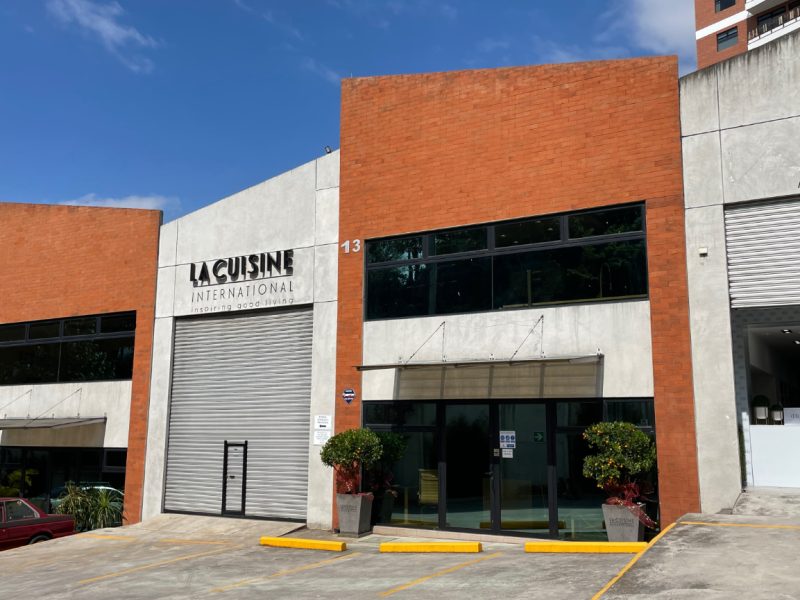
Our Company
Locations
Contact Us
Newsletter
Sign up to receive email updates on the latest products, collections and campaigns.
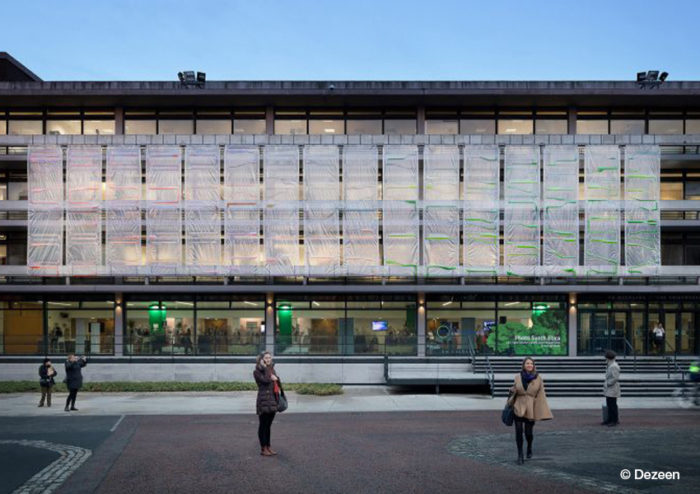
Certainly, using the photosynthesis of algae to make more ecological buildings is an innovative step when it comes to architecture. EcoLogicStudio, an architecture studio based in London, dared to try to take advantage of the effective natural process of plants and algae to eliminate air pollution by creating a living curtain, designed to rest on the facades of buildings.
The prototype of the so-called “ecological curtain” designed along with Photo.Synth.Ethics, was presented by the architects during the Innovation Climate Summit held in November 2018 in Dublin. The event was held on the first and second floors of the main facade of the Printworks building in Dublin Castle.
This ecological curtain formed by 16 bioplastic modules, each of them measuring two by seven meters. Serpentine tubes embedded in the panels optimize the process to absorb carbon from the air. “In the age of cities, homes and smart vehicles, a spatial and architectural reframing that generates beneficial social transitions is necessary,” said EcoLogicStudio.
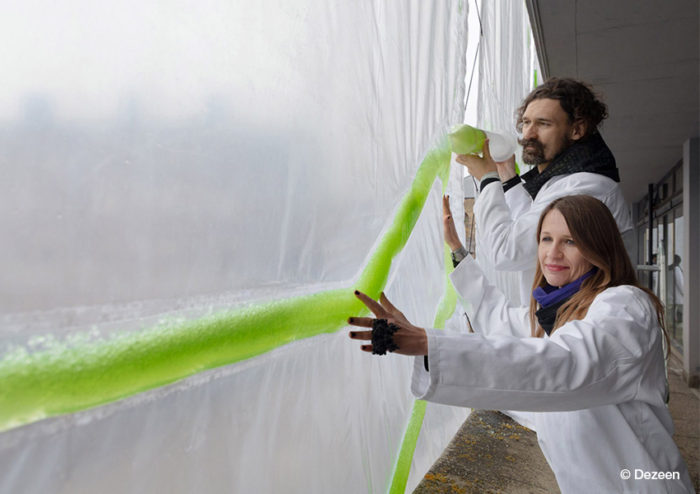
What is it and how does it work?
The ecological curtain is a photobioreactor. In other words, an incubator of algae that oversees the natural process of absorption of carbon that takes place during photosynthesis. The microalgae of this curtain feed on light and air during the day. They optimize the natural process, capturing approximately one kilogram of carbon dioxide per day, which is equivalent to the work done by 20 large trees.
Oxygenate and illuminate
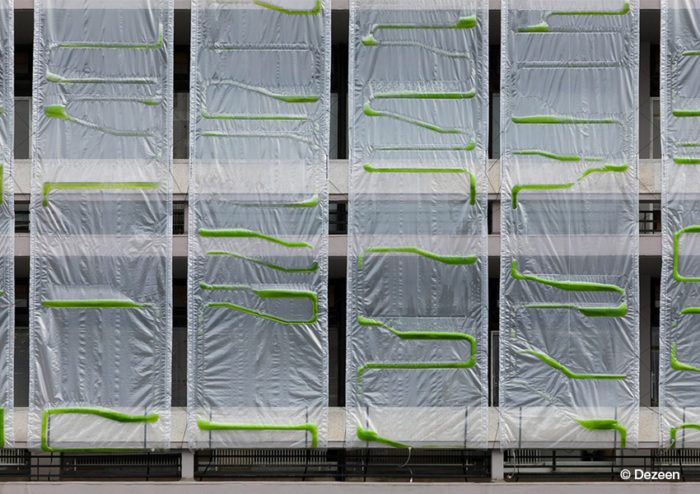
But the oxygenation of the environment isn’t the only benefit that this ecological curtain brings. According to EcoLogicStudio, this curtain offers another by-product: the process is the biomass. Within this system, algae grow from the carbon obtained from photosynthesis and at the same time can be burned to obtain energy or become bioplastic material, like the one used to make the curtain. As if that wasn’t enough, the algae are also bioluminescent, and produce a slight shine that can illuminate the building at night.
Its creators state that like previous projects, this curtain is a form of biomimicry. In other words, a design that copies structures and processes of nature. This project was produced in collaboration with the European Institute of Innovation and Technology (EIT) Climate-KIC.
Carbon sequestration is a type of technology supported by the UN’s Intergovernmental Panel on Climate Change. In fact, in its October 2018 report, it incorporated this form of geo-engineering into the list of safest ways to cope with global warming.
EcoLogicStudio is a study led by architects Claudia Pasquero and Marco Poletto. The firm also created the Urban Algae Canopy Pavilion at the 2015 Milan Expo. They are also the founders of the consortium Photo.synthetica, which has allowed them to design more solutions like this one.
According to the estimates of EcoLogicStudio, the curtain will integrate into new and existing buildings, and they hope that its action will multiply and help to avoid the much-feared climate change.

Sign up to receive email updates on the latest products, collections and campaigns.
Carrera 9 Nº80-45
Bogotá D.C., Colombia
Monday to Friday: 11:00 a.m. - 07:00 p.m.
Saturday: 11:00 a.m. - 06:00 p.m.
(+571) 432.7408/7493
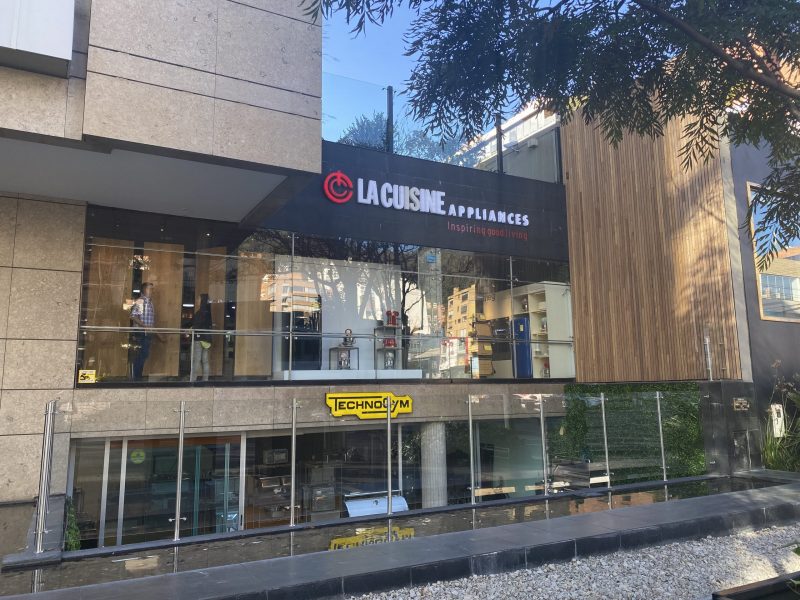
Calle 77 #72-37
Barranquilla, Colombia
Monday to Friday: 08:00 a.m. - 06:00 p.m.
Saturday: 09:00 a.m. - 01:00 p.m.
(+57) 605 352 0851
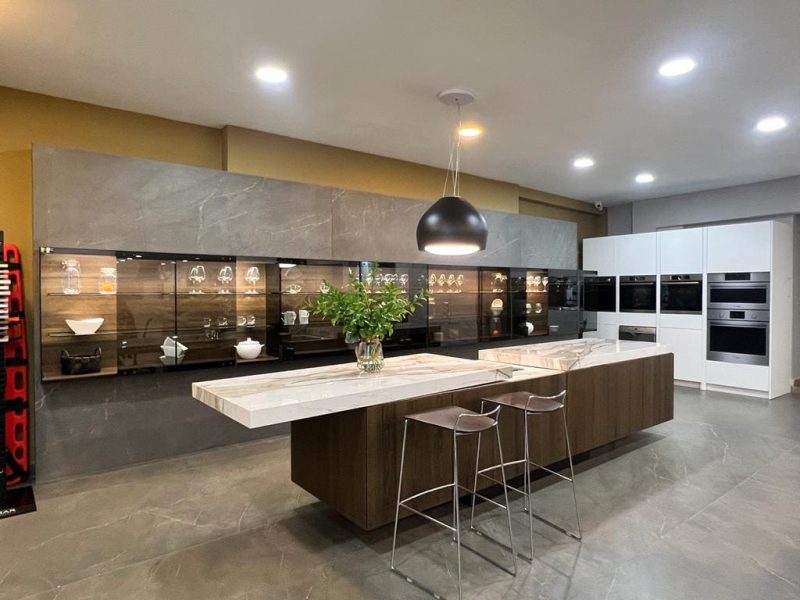
Edificio La Cuisine
Costado Suroeste, C.C. La Paco
Escazú, Costa Rica
Monday to Friday: 09:00 a.m. - 05:00 p.m.
Saturday: 10:00 a.m. - 04:00 p.m.
(+506) 4000.3555
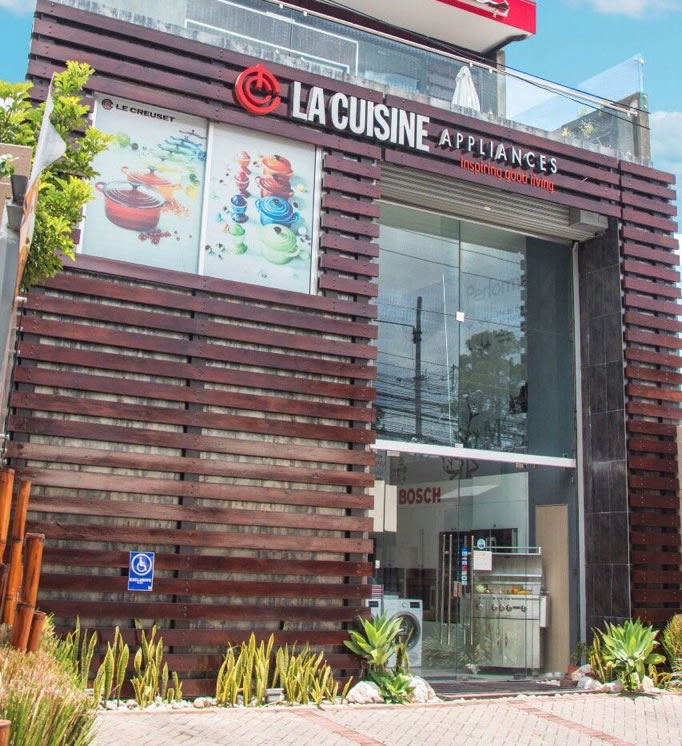
Galerías de Puntacana No. 51
Punta Cana, La Altagracia, R.D.
Monday to Friday: 09:00 a.m. - 06:00 p.m.
Saturday: 10:00 a.m. - 01:00 p.m.
(809) 378.9999
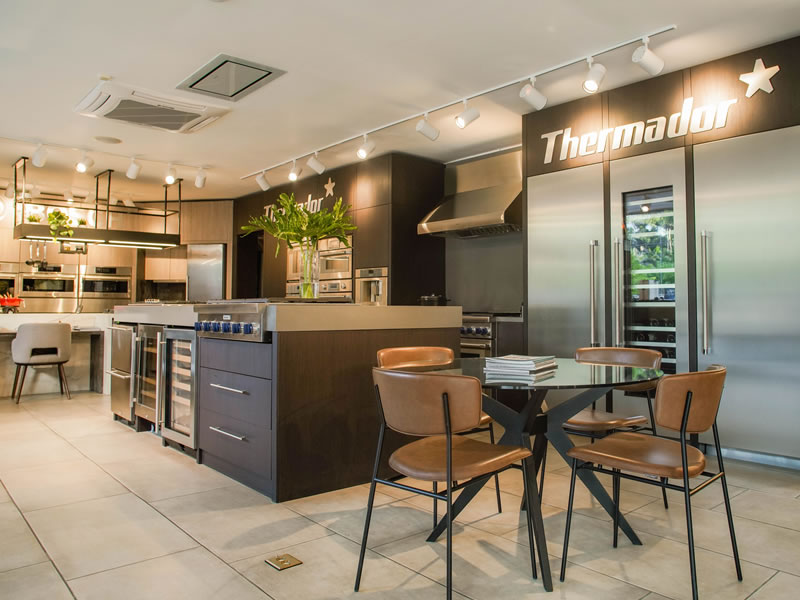
C/Rafael Augusto Sánchez No.22,
Piantini, Santo Domingo, R.D.
Monday to Friday: 09:00 a.m. - 06:00 p.m.
Saturday: 09:00 a.m. - 01:00 p.m.
(809) 378.9999

18187 Biscayne Bvld., Aventura
FL 33160
Monday to Friday: 10:00 a.m. - 06:00 p.m.
Saturdays by appointment.
(786) 322 5432
www.lacuisineappliances.com
sales@lacuisineappliances.com

3232 Coral Way,
Miami FL 33145
Monday to Friday: 10:00 a.m. - 06:00 p.m.
Saturday: 10:00 a.m. - 03:00 p.m
(305) 442-9006
www.lacuisineappliances.com
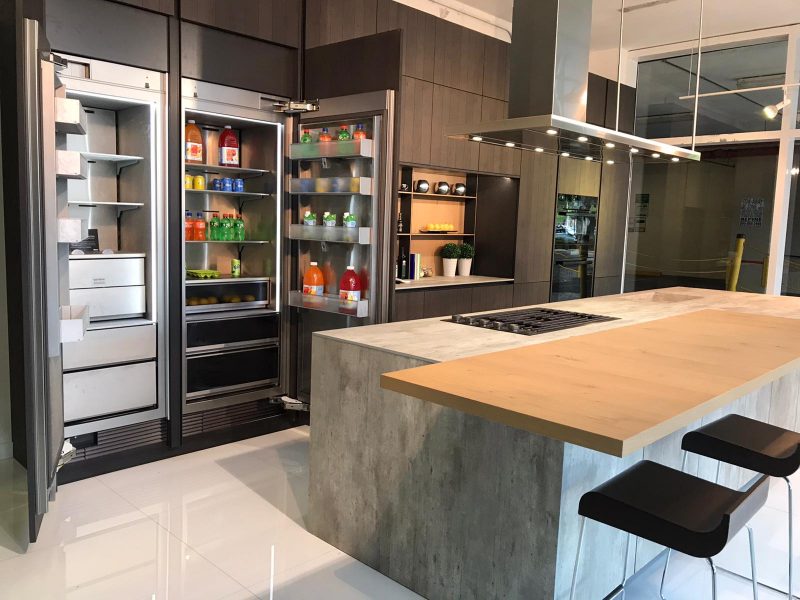
2005 NW 115th Avenue
Miami, FL 33172
Monday to Friday: 09:00 a.m. - 05:30 p.m.
Saturday: Closed
(+1) 305 418.0010
info@lacuisineinternational.com
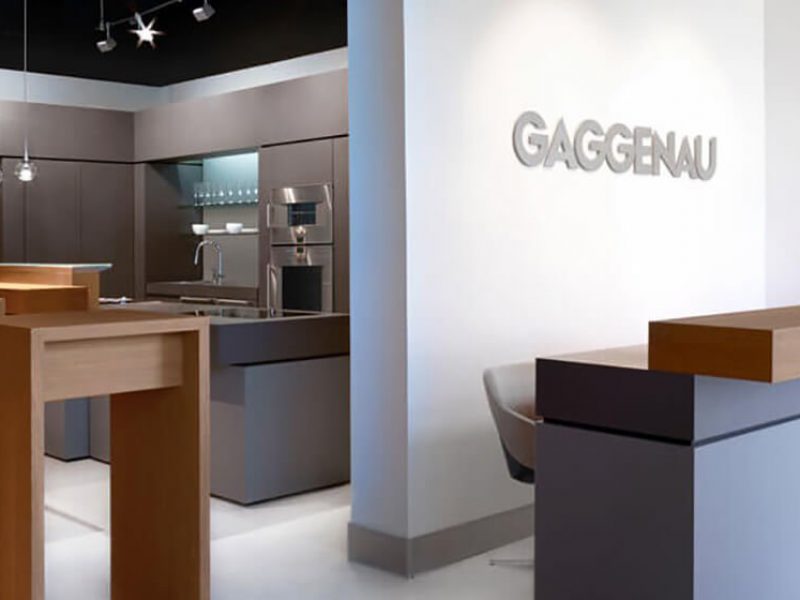
Obarrio. Av. Samuel Lewis,
Addison House Plaza,
Local No.11, Panamá
Monday to Friday: 09:00 a.m. - 06:00 p.m.
Saturday: 10:00 a.m. - 04:00 p.m.
(+507) 265.2546/2547
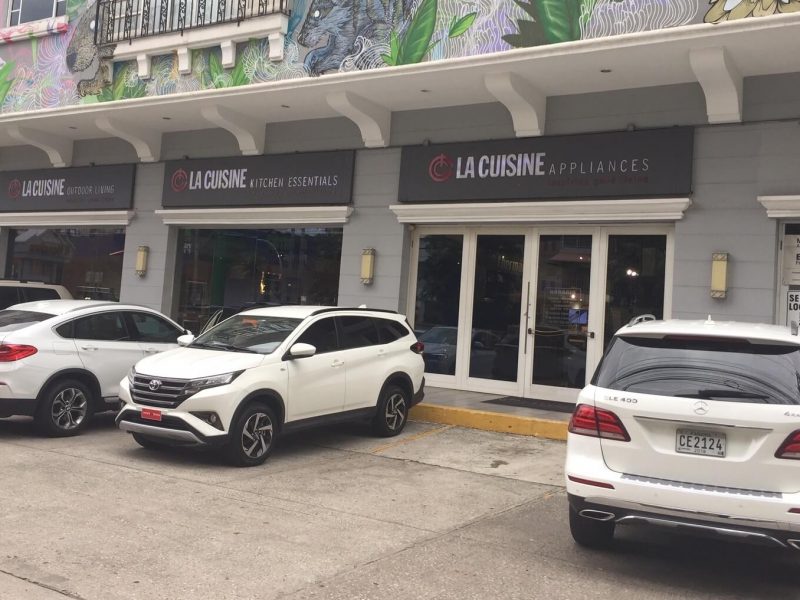
Av. Caminos del Inca 1603,
Santiago de Surco, Perú
Monday to Friday: 10:00 a.m. – 07:00 p.m.
Saturday: 10:00 a.m. – 01:00 p.m.
(+511) 637.7087

Centro Comercial San Ignacio, Nivel C, local No.5
Caracas, Venezuela
Monday to Saturday: 10:00 a.m. – 07:00 p.m.
(+58) 212 264.5252
(+58) 414 018.5352 (Wholesale)
ventas@lacuisineappliances.com
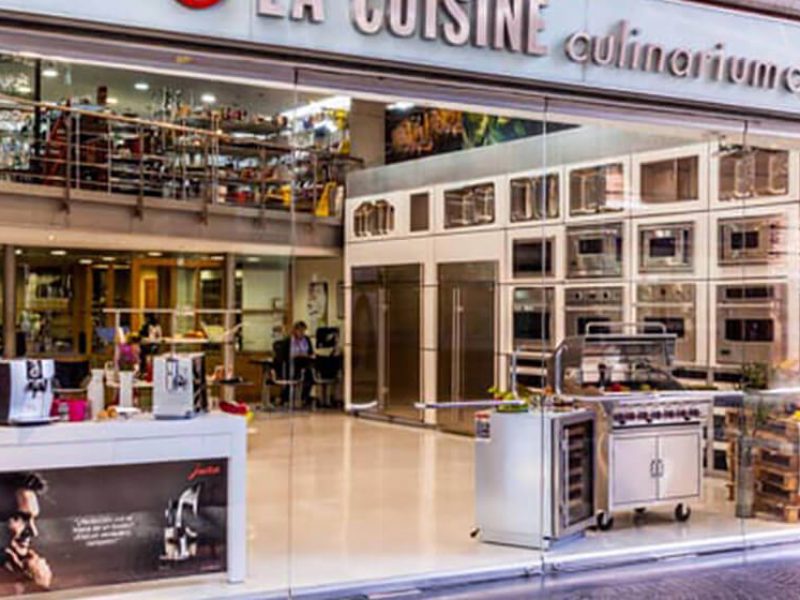
Complejo Pradera Ofibodegas No.13,
20 calle final Z. 10 Km. 6.8 Carretera a Muxbal,
Santa Catarina Pínula, Guatemala
Monday to Friday: 08:00 a.m. - 05:30 p.m.
Saturday: 09:00 a.m. - 12:30 p.m.
(+502) 6671-3400
